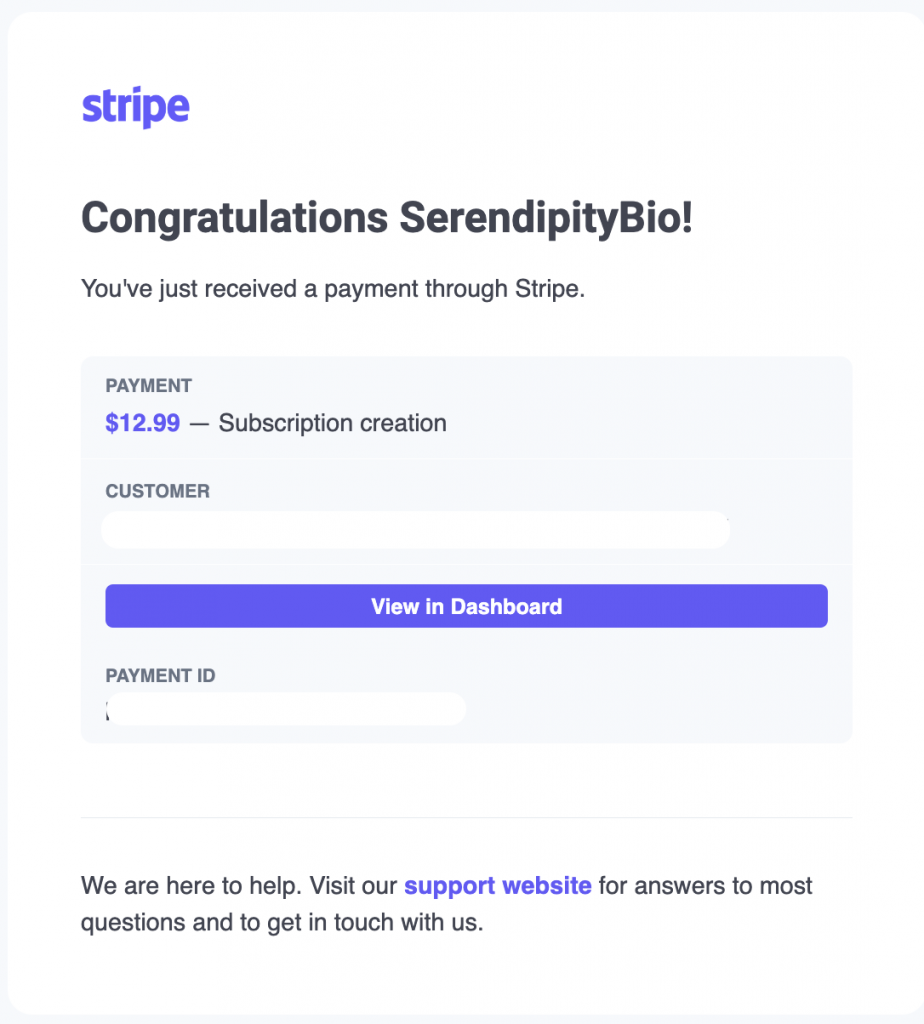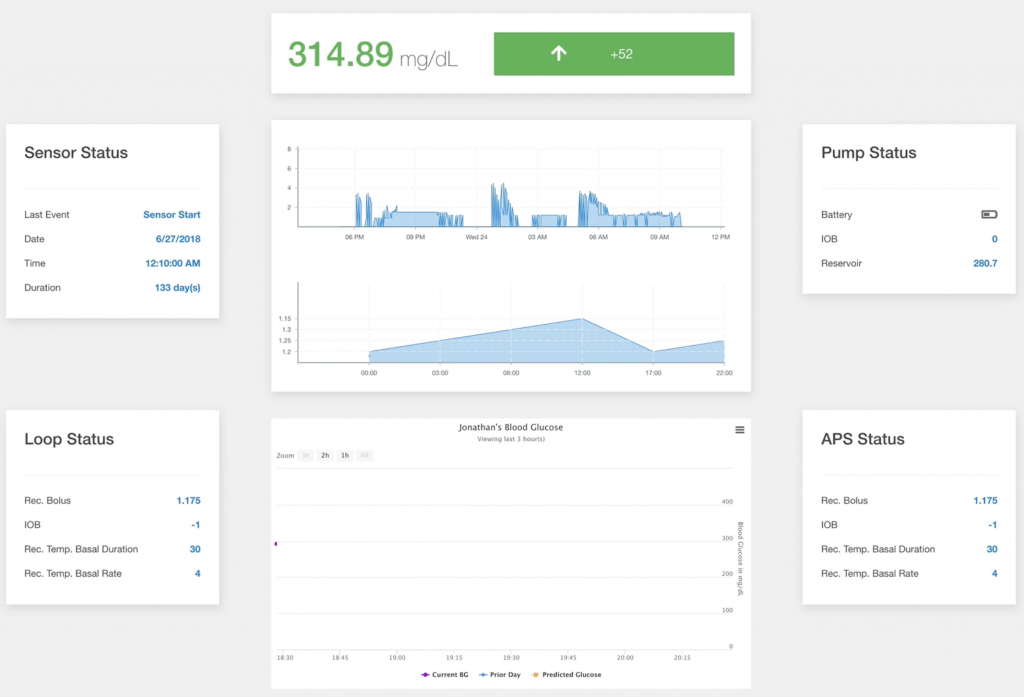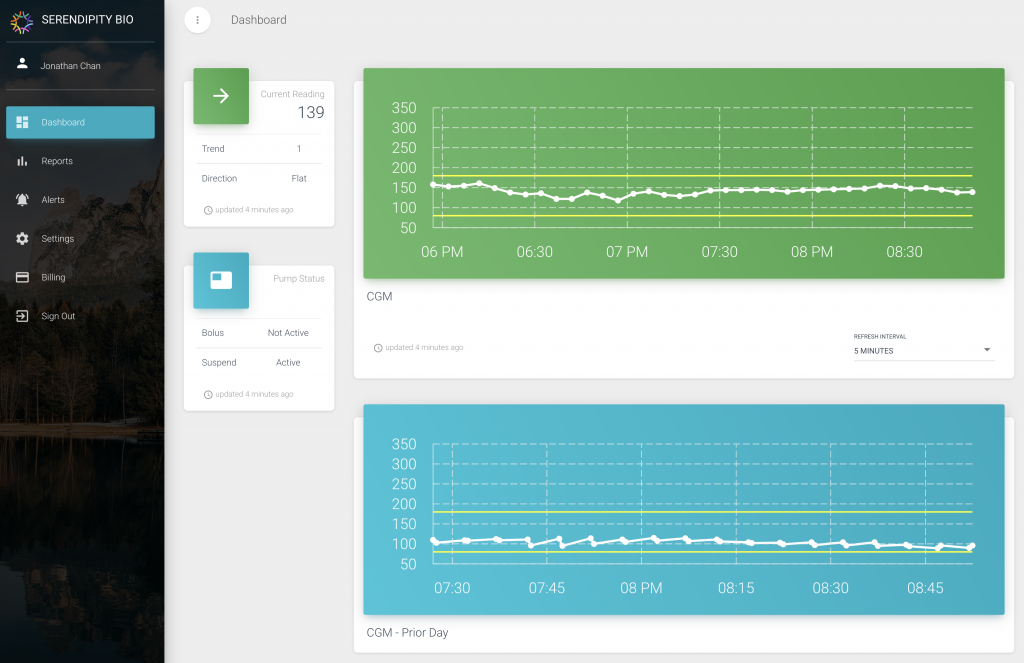Well, not really the first dollar, more like the first 12. And ninety-nine cents.
On Tuesday, August 15 at 12:30PM PST, I received notification that I had my first customer sign up.
I’ll spare you the excited hyperbole (I definitely did a happy dance in my chair), here’s a screenshot:

Today, I’d like to share with you at a high level, the work, time, and cost involved to reach this milestone. I want to highlight the details that get left out when someone says, “I’m starting a company” and provide some context into how long this took.
And before I get started – a big, big thank you to everyone that’s helped, listened, or coached me so far!
Paperwork
The biggest piece of paperwork involved was establishing an LLC here in California. I went with a LLC for a few reasons:
- Lowest cost way to start a business
- Protects my personal assets from any liability
- Easily converted into a different corporate structure and tax status if/when I need to take on outside investment.
A lot of startups or technology based companies, often get pushed into pursuing an S-Corp in Delaware. For Serendipity, this would have added unnecessary complexity to operations, expenses, and taxes when I’m focused on launching the product and attaining customers.
If I were to take on any type of any amount larger than $100K for example, I’d lean towards incorporating in Delaware with S-Corp filing status. I won’t go into details here of why but I prioritized simplicity and velocity.
While there are a lot of options and companies offering incorporation services, I opted to utilize a friend’s firm, Tacsis Law & Accounting, to get Serendipity incorporated as an entity.
The main benefit of this approach alleviates any worry of, “Am I doing this right?”
The second benefit is having a close friend (and his entire team) to help me answer any legal questions, operating concerns, and accounting matters.
Finally, I’m supporting a friend’s business rather than a large company or unknown individual.
Fee breakdown:
$2000 (retainer fee for incorporation documents)
$2000 (fees for EULA draft and contractor agreement)
$200 (misc. fees and overhead for emails, correspondence, etc…)
The approximate cost: $4200
The other piece of paperwork that I obtained but wasn’t necessary, was a Los Angeles county tax certificate. This was free to obtain from the city and I plan on cancelling the certificate in the coming weeks. LA County has a tax exemption for businesses that only deal with electronic services.
Banking
This was one of the easier building blocks to stand up but still took a few weeks to actually implement and test in code. Standing up actual bank accounts took an hour and a short, 24 hour waiting period.
After an evening of research, I opted to use Mercury to perform my business banking. They offer a zero-fee and zero minimum balance service that allows me to move money from my personal accounts.
Traditional banks such as Chase, have account minimums and fees surrounding basic business checking and savings accounts. Additionally, they’re not well equipped to deal with online-only businesses and cater to brick & mortar retailers with point-of-sale terminals.
Mercury, alongside their fee structure, provides effortless integration with Stripe, my payment processing platform.
Stripe integration came in two pieces: the code implementation and linking with my Mercury accounts.
The code implementation took me a handful of weeks to develop and test, as I had to create a customer database schema, build a service to interface with Stripe, and connect their pre-built UI into my user payment workflow.
Integrating Stripe with Mercury took a few clicks and at most an hour. Since I had already implemented the Stripe service before this stage, I only had to provide Stripe with account and routing information.
Another win here, Stripe handles account cancellation from within the customer portal (which is linked from Serendipity) and refunds with zero input from me. When a customer opts to cancel or a refund occurs, my application gets an automated notification and handles terminating the user’s account using my deployed Stripe service.
The approximate cost: Free
Product Development
While I won’t provide dollar amounts of my infrastructure cost such as AWS compute, I’ll outline the cost of product development I’ve incurred so far.
In order to get the UI off the ground, I purchased a license for a set of designs and templates from Creative Tim. This was a great investment as it let me get something built with fairly high fidelity and high speed, without a large time investment of building a complete UI from scratch.
Cost: $199
With the foundation of the Serendipity UI established before launch, I started future planning of the UX/UI and prioritized getting a bespoke design in place.
A another friend connected me with the wonderful, Francisca Blaauboer, to collaborate with me on this phase of work. Francisca built a fantastic design library, including iconography, fonts, UX, and UI layouts that Serendipity can utilize immediately going forward.
Eventually, all the Creative Tim components I implemented will be replaced by the components that Francisca created.
The approximate cost: 2 months of work based on a pre-set daily rate with Francisca.
Without getting too technical, I wrote the server code for Serendipity from scratch. This part of development was definitely the easiest and cheapest part of the product. From earlier posts, using Firebase, Stripe, and other libraries made building a server quite easy and straightforward, with the only cost being my time.
The approximate cost: 18 months
Intangibles
I could write for a long, long time about the intangibles or the opportunity cost of getting that first subscriber.
I think what’s most relevant to you, is to highlight this company and idea didn’t take a “short” two years. The reality is that I’ve been working on this idea for nearly eight years in some form or another.
It wasn’t until late 2018 I had solidified the idea of what I was going to build and finished a working prototype:

Before the iteration above, I had been chasing the idea of building a hardware device, augmented with software. I spent maybe two years working on those ideas until I changed course again.
The UI you see above, transformed into the Serendipity product that’s available today:

Build Far
Building an online business can take a lot of time. I don’t think the technology industry does a good job of highlighting what it takes to bring an idea to market especially when you are bootstrapping the company and product. I think the idea of going after investor money and hiring people is great but that approach has a lot of perils and a very different set of risk vectors.
I’ll leave you with a closing thought. I spoke with someone from a larger VC firm some weeks ago, and one comment stays with me, “We want to see how far you can get with little to no investment…” I translated this into, “How far can you take your idea, given your resources (time, money, energy, focus, expertise), requirements, and product market?”
Well, after a lot of time, energy, consistency, and effort, I get to say, “Pretty damn far.”